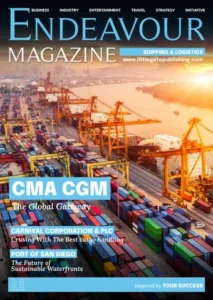Businesses must be savvy with their finances to maintain profitability and sustain growth. One of the most effective ways companies can improve their bottom line is by implementing robust cost-saving strategies. These strategies often go beyond simple budget cuts, involving a combination of thoughtful planning, smart negotiations, and innovative approaches to managing resources. Let’s dive behind the scenes to explore how substantial cost-saving strategies come to life and how businesses can benefit from them.
Understanding the Importance of Cost Savings
Cost-saving is more than just trimming expenses; it’s about optimizing how every dollar is spent. Organizations that master cost efficiency not only protect their profit margins but also gain a competitive advantage in their markets. By carefully managing costs, businesses can reinvest savings into growth opportunities such as technology upgrades, employee development, or expanding into new markets.
However, achieving meaningful cost savings requires more than casual efforts. It demands strategic insight, detailed analysis, and sometimes expert assistance to uncover hidden opportunities.
Analyzing Spending Patterns
Behind every cost-saving success is a thorough understanding of current spending patterns. This process begins with an audit of all expenses, encompassing operational overheads, supplier contracts, taxes, and utilities. Identifying where the most significant expenses lie enables businesses to focus their efforts where the potential for savings is highest.
This process can reveal inefficiencies such as redundant services, outdated contracts, or unutilized resources. For instance, renegotiating supplier agreements or switching to more cost-effective service providers can immediately reduce overhead.
Negotiating with Vendors and Service Providers
One of the most powerful tools in cost-saving strategies is negotiation. Vendors and service providers often offer discounts, better terms, or bundled services to retain clients. By approaching negotiations with clear data and an understanding of market alternatives, businesses can secure better deals that significantly reduce costs.
Beyond price reductions, renegotiations may include more favorable payment terms, added value services, or flexible contract durations. These improvements can translate into improved cash flow and operational flexibility.
Leveraging Tax and Rate Relief Options
Taxes and business rates represent a significant fixed cost for many companies, especially those occupying commercial properties. Yet, many businesses fail to fully explore available reliefs or reductions that could lower these costs substantially.
For example, the process of applying for business rates reduction can be complex and daunting, but the financial benefits can be profound. Engaging with specialists who understand the intricacies of these relief schemes can help unlock savings that directly impact a company’s profitability. Services like Inver Business Rates Reduction specialize in guiding businesses through this process, ensuring they claim every applicable relief without risking compliance issues.
Embracing Technology for Efficiency
Technology is a cornerstone of modern cost-saving strategies. Automating routine tasks, improving communication, and using data analytics can reduce labor costs and improve decision-making accuracy. Software solutions that manage inventory, track expenses, or optimize energy use can also contribute significantly to lowering operational costs.
Additionally, remote working technologies and flexible office solutions help reduce expenses related to physical office spaces. Businesses that adapt quickly to these trends often see both immediate and long-term savings.
Cultivating a Cost-Conscious Culture
Sustainable cost-saving strategies don’t rely solely on one-time fixes or external consultants. They flourish when embedded in the company culture. Encouraging employees at all levels to think about cost efficiency creates an environment where savings ideas are continuously generated and implemented.
Training, incentives, and transparent communication about financial goals empower teams to identify wasteful practices and suggest improvements. This cultural shift ensures that cost-saving becomes part of everyday operations rather than an occasional project.
Monitoring and Adapting Over Time
Finally, cost-saving strategies require ongoing monitoring and adjustment. The business environment is dynamic; supplier prices, tax regulations, and operational needs change. Regular reviews of spending and savings ensure that strategies remain effective and relevant.
Data-driven reporting and feedback loops help businesses respond quickly to new opportunities or challenges. This adaptability is key to maintaining substantial savings over the long term.
Substantial cost-saving strategies are multifaceted efforts that combine detailed financial analysis, negotiation, tax expertise, technological adoption, and cultural change. By looking behind the scenes at these components, businesses can unlock significant savings that support growth and resilience.







